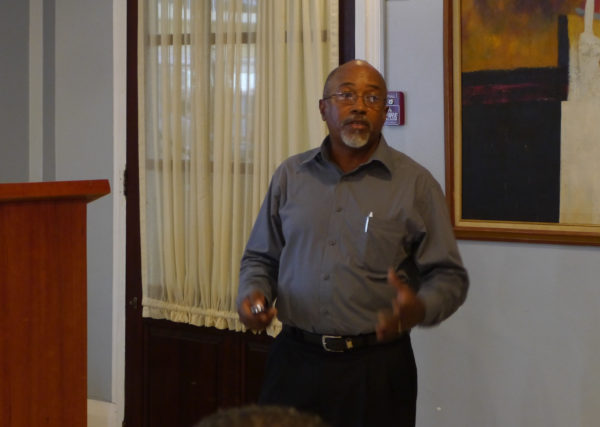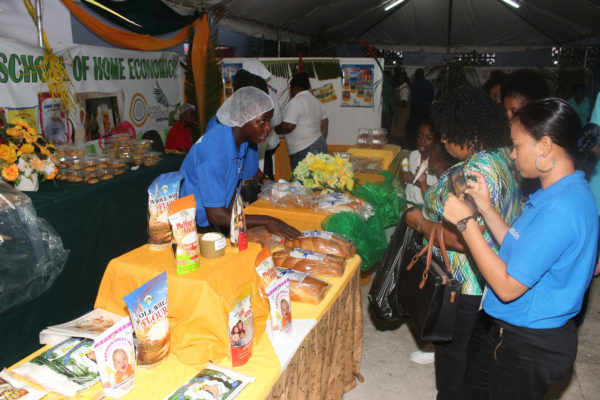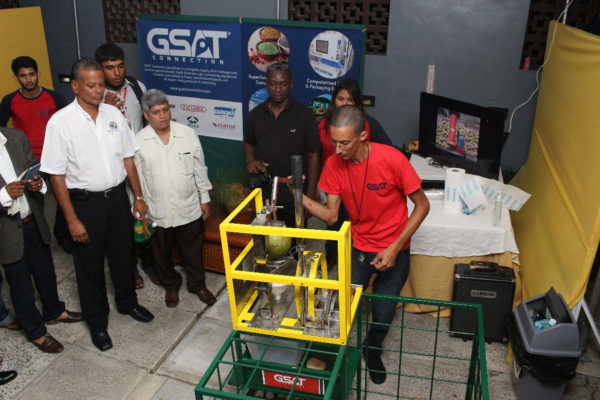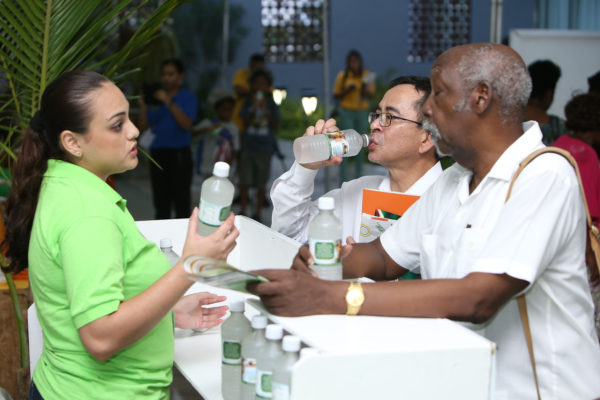The recently-held Guyana Coconut Festival has been deemed a success as more people are expressing interest in cultivation that could boost the revival of the industry.
“A lot of people have been waiting on the opportunity to invest in coconut and that was what we actually wanted to get out of the festival,” Raymond Trotz, a producer and Chairman of the National Stakeholders Platform (NPS), told Stabroek News in an interview.
The festival, held from October 21 to October 23 under the theme ‘Awakening the Sleeping Giant,’ was part of the activities planned for Coconut Awareness Week.
Trotz said there was a need to raise awareness for revitalising the coconut industry and he was pleased with the response. In that regard, he reported that he has been getting calls and “serious inquiries for seedlings, not just for hundreds of acres but for thousands of acres.”
But he does not have the seedlings available. “It means we have to accelerate the nursery training that was started by CARDI [Caribbean Agricultural Research and Development Institute] and NAREI [National Agricultural Research and Extension Institute] as a joint effort,” he added.
He pointed out: “This is not seeds for ochro and bora. When you want to propagate the coconut, the plant population is between 60 and 75 plants per acre – 60 if it’s the tall variety and 75 if it’s the dwarf variety.”
He said if persons want to invest in thousands of acres, they “have to have those seedlings that would take a few months to sprout after planting and then you transplant them.”
Trotz noted, “We have to train people to select suitable nuts to plant in nurseries to supply to farmers.
“We would want to certify those nurseries, otherwise you would find anybody picking up any old nuts and planting them. This is a long-term investment and requires careful planning to know the variety and the amount so that from the beginning it is set in the business plan.”
According to him, coconuts vary between the 18-month to the five-year variety and it would take about four to five months to get the plants in the nursery. He added that while a lot of people are looking at coconut water, there are three streams that have been identified for marketing: coconut water, coconut oil, and the fibre products. “And to some extent, food products such as milk while a few people would want to do activated charcoal,” he said.
He said if producers are going to aim at the oil market, for instance, it is better to take the five-year variety, which has a thicker kernel, or one that is a cross between the tall and the dwarf, referred to as the “bastard nut.”
‘A lot of interest’
Trotz also said that in view of the tremendous success of the festival, the administrators for the Coconut Rehabilitation Project across the Caribbean have contacted him to share his ideas for planning a festival.
Achieving success required a lot of planning and Trotz said the credit must go to Donald Sinclair, Director General of Tourism, “for driving it week after week, starting from last December. He used his connections in tourism to get into contact with the embassies.”
Trotz had also included the idea of the summit to strike a “balance between festivities and celebrations and a business aspect and it worked because there was a lot of interest.” It was attended by investors and potential investors.
He had met with the Brazilians and got ideas to pull off the summit and had also asked for a representative from Embrapa, the main research centre for agriculture in Brazil, to deliver a technical paper.
Meanwhile, a piece of equipment coming out of Brazil to extract coconut water for bottling also attracted the attention of many at the festival, including a producer from Jamaica, who is interested in purchasing.
The Brazilians also displayed equipment that chips the coconut shells to be composted and used as organic fertiliser. It can also be spread on the surface of the ground to help to feed the microbes, “which compete with the root of the coconut trees for food.”
Trotz is hoping that the people in the Pomeroon invest in the latter piece of equipment, which he referred to as the “chipper” so that they can stop the practice of discarding the shells in the river.
Another good thing that came out of the festival, he said, are plans to form a coconut board. “We are looking at models out of Jamaica, India and Kenya to see what suits Guyana,” he noted.
The board would “look at the growth of the industry, the production of the nut, improving productivity, increasing the range of products, pricing and grading, searching for markets, standards for the food and drug regulations and getting the most advanced technologies from other countries through the board,” he explained.
The board would be formed through a public/private sector arrangement, where people from the government, private sector and support agencies would be asked to participate.
Intercropping
The festival has also helped to make more people understand the stature of coconut on the world market and the fact that across the Caribbean there is a project to revitalise the industry. “So people who have had land lying idle and didn’t know what to do with it are now calling and asking how to get into production,” Trotz said.
However, coconut is a long-term crop and new investors cannot expect economic returns until after five or seven years. “The early maturing varieties are the 18 months, but you would not be able to harvest at that time, but you have to wait a few more months before it is ready for harvesting. After that, the production would increase gradually,” he added.
As a result, he said farmers can engage in intercropping in order to carry their investment until the coconuts start to produce and it can be done with items such as sorrel or turmeric, depending on the market.
Trotz said interested investors could look at the old estates with a view to rehabilitating them, but the productivity may not be at its prime because they are old. Like everything else, the coconut would respond to good treatment, he added. “Clean up the place and give good nutrients, especially if you do composting and give it water and you would get a fair production,” he said.
He noted that the exportation of oil has been increasing in the Dominican Republic, which has “contracted agents to go around in Guyana and buy nuts. That has created a tremendous pressure for demand and shortage…
“About 2008 to 2009, there was a spurt in export of dry coconuts from 268 metric tonnes to about 10,000 metric tonnes. And from 2008 to 2014, that figure moved from 10,000 metric tonnes to about 14,000 metric tonnes in 2015,” he said. This is the case for both water and dry nuts.
Trotz, who produces bottled coconut water, has also experienced a shortage and may have to look to purchase in Linden and on the East Coast.
He started the water nut business with his wife around Georgetown and even though it has grown, they did not have the land and the capacity to expand.
Three businesspersons from Essequibo are now in the bottled coconut water business and “are competing for the same pool of nuts from the Pomeroon. That has put tremendous pressure on the local market…,” he noted.
He added that the demand has sent the price of the nuts up phenomenally in the Essequibo and in Georgetown. The price has increased from $18 to about $55, while retailers have been selling for between $180 and $240.









